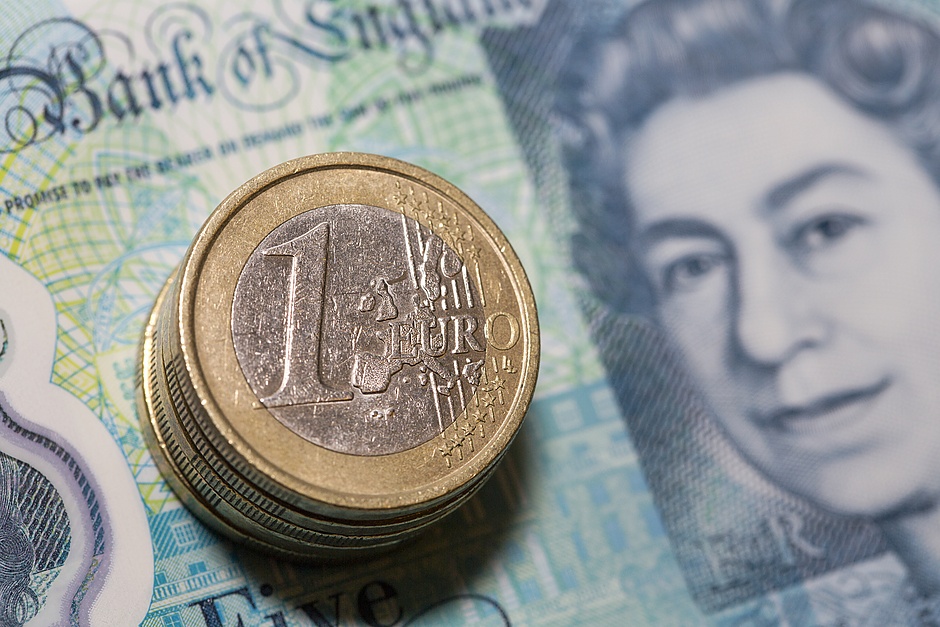EUR/GBP appreciates to near 0.8400 due to hawkish sentiment surrounding the ECB
- EUR/GBP gains ground as the ECB could maintain the main refinancing rate at 4.25% at Thursday’s meeting.
- The Pound Sterling may appreciate further as investors consider UK markets to be a more attractive investment option.
- BoE may initiate reducing interest rates at the August meeting.

EUR/GBP continues to gain ground for the second consecutive session, trading around 0.8400 during the Asian hours on Tuesday. However, the EUR/GBP cross still remains close to 0.8386, the lowest level since August 2022 recorded on Monday.
The Euro finds support from bullish expectations surrounding the European Central Bank (ECB). The ECB is expected to maintain the main refinancing rate at 4.25% during its upcoming July meeting on Thursday. In June, the central bank reduced the interest rate for the first time since 2019, following nine months of unchanged rates. Analysts anticipate two additional rate cuts later this year, likely in September and December.
On the GBP’s side, investors increasingly view the United Kingdom's (UK) financial markets as a preferable investment destination over both European and US markets, which are grappling with political uncertainties. The Labour Party's resounding victory under Keir Starmer has assured stable fiscal policies and streamlined ministerial appointments. This positive sentiment contributes to support for the Pound Sterling (GBP).
Additionally, the GBP's strength has been bolstered by heightened uncertainty surrounding the timing of potential rate cuts by the Bank of England (BoE). Traders anticipate that the BoE will initiate interest rate reductions starting from the August meeting.
Traders assess the upcoming economic data on Wednesday that could impact the Bank of England's monetary policy stance. The Consumer Price Index (YoY) is projected to hold steady at the BoE's 2% target, with core inflation anticipated to dip to 3.4%. Additionally, the Retail Price Index is likely to see a decline, marking the fourth drop in five months.
Interest rates FAQs
Interest rates are charged by financial institutions on loans to borrowers and are paid as interest to savers and depositors. They are influenced by base lending rates, which are set by central banks in response to changes in the economy. Central banks normally have a mandate to ensure price stability, which in most cases means targeting a core inflation rate of around 2%. If inflation falls below target the central bank may cut base lending rates, with a view to stimulating lending and boosting the economy. If inflation rises substantially above 2% it normally results in the central bank raising base lending rates in an attempt to lower inflation.
Higher interest rates generally help strengthen a country’s currency as they make it a more attractive place for global investors to park their money.
Higher interest rates overall weigh on the price of Gold because they increase the opportunity cost of holding Gold instead of investing in an interest-bearing asset or placing cash in the bank. If interest rates are high that usually pushes up the price of the US Dollar (USD), and since Gold is priced in Dollars, this has the effect of lowering the price of Gold.
The Fed funds rate is the overnight rate at which US banks lend to each other. It is the oft-quoted headline rate set by the Federal Reserve at its FOMC meetings. It is set as a range, for example 4.75%-5.00%, though the upper limit (in that case 5.00%) is the quoted figure. Market expectations for future Fed funds rate are tracked by the CME FedWatch tool, which shapes how many financial markets behave in anticipation of future Federal Reserve monetary policy decisions.
Author

Akhtar Faruqui
FXStreet
Akhtar Faruqui is a Forex Analyst based in New Delhi, India. With a keen eye for market trends and a passion for dissecting complex financial dynamics, he is dedicated to delivering accurate and insightful Forex news and analysis.

















